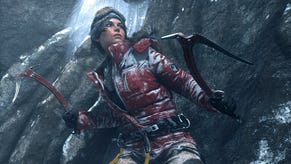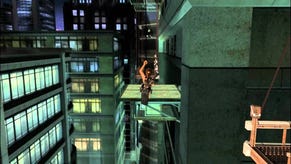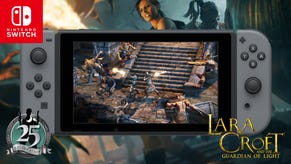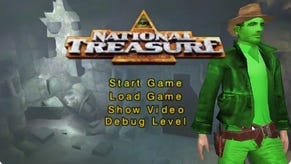Tomb Raider Anniversary
Raise a glass.
It's just as well Tomb Raider fans are a patient bunch. For the large part of the past decade it seemed like the interminable wait for some kind of return to 'form' was never going to happen. But last year's polished but undemanding Legends was certainly a promising step in the right direction. All it needed, you felt, was to get back to basics - back to the sort of fiendish design vision that made the series such a phenomenon when it burst onto the scene in 1996.
And so it has proved. By re-energising and revitalising what people loved about Tomb Raider in the first place, Anniversary is, in all respects, the best Lara Croft adventure to date. It's back to palm sweating platform puzzling on an extraordinary scale, with feisty combat elements put well and truly into the background to add tension and drama only when required. It feels like its own game again despite 'only' being a remake of the celebrated 1996 original. But it's also a 'celebratory remake', and one that manages to improve on almost every aspect of the original by rebuilding the game from the ground up without taking anything away from what made it so special in the beginning.
Pixels bigger than your face
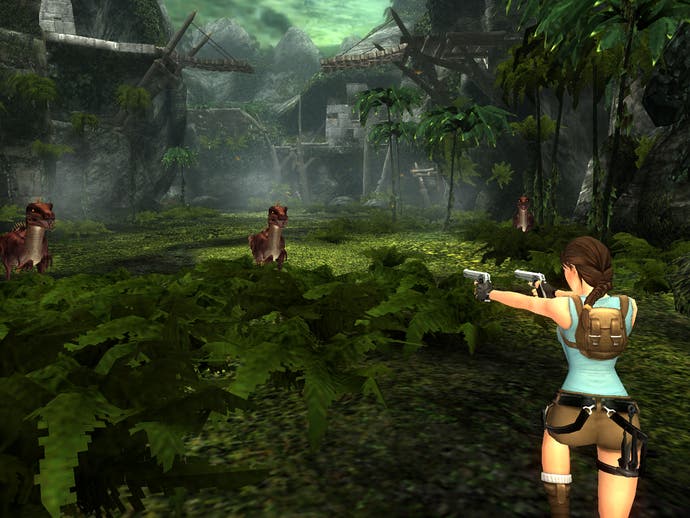
What made it so special was, to put it bluntly, fantastic (and hugely memorable) level design, allied to the fact that it was one of the very first games to fully realise the potential of 3D gameplay. That said, if you were to go back and play the original now, you'd be appalled at how clunky the control and camera system feels, how evil the checkpointing was (unless you played the 'save anywhere' PC version), and, eek, how badly the visuals have aged. Like many of the cutting edge 3D games of the mid 90s, it's a humbling and harrowing experience to fire them up now, and only a respectful remake could hope to preserve the memory of what such iconic games stood for. Fortunately, Anniversary does the job remarkably well, and as good as we could have possibly hoped, in truth.
When you first trudge through the desolate temples in the Peru levels, you'd be forgiven for assuming that it's little more than a delightful graphical makeover. Large chunks of entire levels are exactly how you remember them - or at least how you think you remember them. In truth, though, it's really only the shell that's the same. While most of the basic geometry is admittedly very similar, the way Crystal Dynamics has shaped the game design to take advantage of the enhanced control and move set used in Legends turns it into a very different, and far more enjoyable game.
For example, seemingly minor additions like the ability to grapple objects and yank them down, or fire your grapple at a ceiling-mounted hook and wall run along changes your whole approach to getting around and solving puzzles. Not only that, the fact that the game automatically grabs onto a ledge when you slip off the edge saves you from untold amounts of unnecessary frustration, as does the ability to balance or do a 'safety grab' when necessary. Another godsend is the game's tendency to checkpoint after every single significant chunk of progress, meaning that no longer do you have the pad hurling annoyance of having to traverse large sections to get to the one thing that's barring your progress. It's as if Eidos and Crystal took a look at the long list of perennial bugbears anyone had about the game and scrubbed them off with a big red marker until every one was gone.
Time to let go

With such a sound platform to build the game upon, the only thing between you and making progress are the levels themselves, and almost for the entirety of the game, they're some of the most wonderful examples of platform puzzling you'll ever come across. A lot of people moaned at us last year for 'only' giving Legends a 7, but playing Anniversary, that score seems more relevant than ever. For whereas Legends held your hand almost throughout, there was rarely a sense of delighted discovery or satisfying realisation, because the game's routinely linear design and incessant prompting always left little doubt what to do next. Anniversary strips out the handholding nonsense, save for the odd subtle grapple icon that pops up when you're in range of a hook to fire at, and thanks to an array of huge, non-linear levels, you're forced to play the game properly: like an explorer looking for tell-tale environmental features. If you're really stuck, a journal apparently gives you a few hints, but we never felt compelled to use it, which is a good sign.
Quite often, this freedom to just get on and figure out what to do means that some of the game's 14 levels can take an age to suss out. But while this can often lead to relentless leap of faith annoyance, the solution is almost always right under your nose, and it's hugely satisfying once you get through a section that's been holding you up. After a while, you might learn to stop blaming the game for your own failings, and start paying more attention to the clues all around you.
Duck and dive

With only a smattering of combat to worry about, Anniversary is nothing like the pointless fairground shootout that Legends was. For a start, you won't have AI-free goons popping up obligingly for you to lock-on and blast one after the other. More likely you'll be diving out of the way of feisty lions, deadly panthers, fire-bombing winged demons, slavering wolves, or pesky bats. And when you do, you won't just lock-on and blast away, but you'll often have to dive out of the way of a marauding pack, or get blindsided by one that's bowled into you at full pelt from behind. They're not mucking about, that's for sure, and as a result the combat - when it does happen - is really entertaining.
Although you can generally win out by diving around randomly and taking advantage of the generous lock-on, it's more fun if you take advantage of an enemy's 'rage attack' (denoted by a little flash of red above their head) by performing the slo-mo 'adrenaline dodge'. It's not the usual lazy bullet time crap, but a genuinely tense, exciting way of capping a determined enemy just as they're about to pounce. Just as Lara dives out of the way, two reticules slowly move over the target, and once they're together you can loose off a deadly shot that - at the very least - will do a lot more damage than just blasting relentlessly. When it comes to the various boss encounters, you generally have to use this technique, or you'll just die - simple as that.
But less thrilling is the reliance on Simon-says Quick Time Events, in a tiresome concession to modern day action adventures (You can point the finger of blame at God of War and Fahrenheit all you like, but Shenmue started it years ago). But unlike most QTEs, Tomb Raider's are even less demanding, mostly requiring little more than up or down - and with a generous amount of time to pull them off, too. Just like all the other games around currently using this technique, it does give a more interactive feel to what might otherwise be plain cut scenes, but they're so easy to pull off that you feel like they might as well not bothered. And - I have to agree with Oli here - Crystal has somehow managed to reduce the seminal T-Rex slaying moment to what amounts to an anti-climactic cut scene. Such moments of abject disappointment are mercifully rare, though, so you'll get over it pretty quickly.




